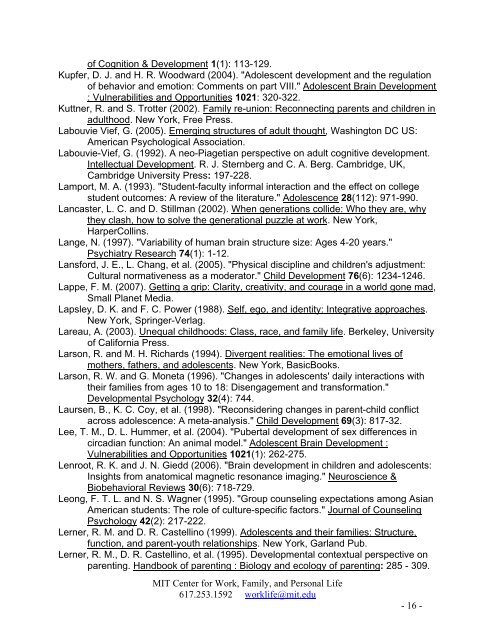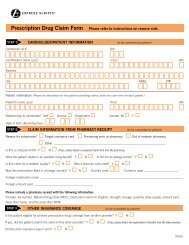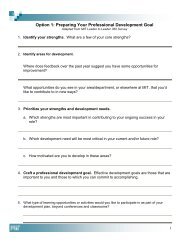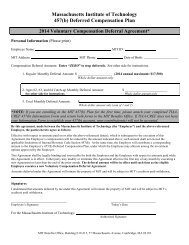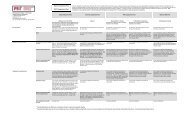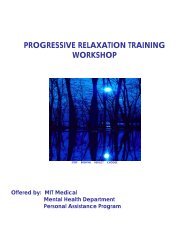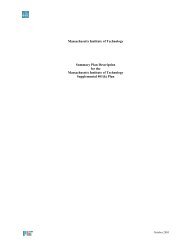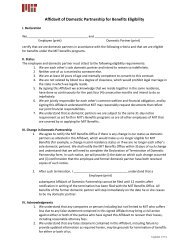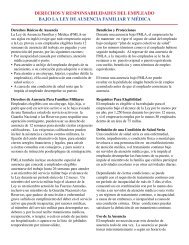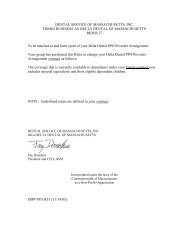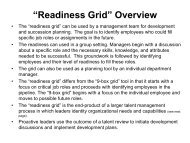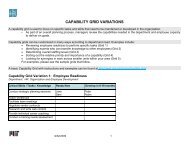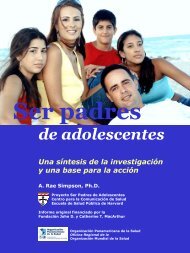MIT Center for Work, Family, and Personal Life 617.253.1592 ...
MIT Center for Work, Family, and Personal Life 617.253.1592 ...
MIT Center for Work, Family, and Personal Life 617.253.1592 ...
You also want an ePaper? Increase the reach of your titles
YUMPU automatically turns print PDFs into web optimized ePapers that Google loves.
of Cognition & Development 1(1): 113-129.Kupfer, D. J. <strong>and</strong> H. R. Woodward (2004). "Adolescent development <strong>and</strong> the regulationof behavior <strong>and</strong> emotion: Comments on part VIII." Adolescent Brain Development: Vulnerabilities <strong>and</strong> Opportunities 1021: 320-322.Kuttner, R. <strong>and</strong> S. Trotter (2002). <strong>Family</strong> re-union: Reconnecting parents <strong>and</strong> children inadulthood. New York, Free Press.Labouvie Vief, G. (2005). Emerging structures of adult thought, Washington DC US:American Psychological Association.Labouvie-Vief, G. (1992). A neo-Piagetian perspective on adult cognitive development.Intellectual Development. R. J. Sternberg <strong>and</strong> C. A. Berg. Cambridge, UK,Cambridge University Press: 197-228.Lamport, M. A. (1993). "Student-faculty in<strong>for</strong>mal interaction <strong>and</strong> the effect on collegestudent outcomes: A review of the literature." Adolescence 28(112): 971-990.Lancaster, L. C. <strong>and</strong> D. Stillman (2002). When generations collide: Who they are, whythey clash, how to solve the generational puzzle at work. New York,HarperCollins.Lange, N. (1997). "Variability of human brain structure size: Ages 4-20 years."Psychiatry Research 74(1): 1-12.Lans<strong>for</strong>d, J. E., L. Chang, et al. (2005). "Physical discipline <strong>and</strong> children's adjustment:Cultural normativeness as a moderator." Child Development 76(6): 1234-1246.Lappe, F. M. (2007). Getting a grip: Clarity, creativity, <strong>and</strong> courage in a world gone mad,Small Planet Media.Lapsley, D. K. <strong>and</strong> F. C. Power (1988). Self, ego, <strong>and</strong> identity: Integrative approaches.New York, Springer-Verlag.Lareau, A. (2003). Unequal childhoods: Class, race, <strong>and</strong> family life. Berkeley, Universityof Cali<strong>for</strong>nia Press.Larson, R. <strong>and</strong> M. H. Richards (1994). Divergent realities: The emotional lives ofmothers, fathers, <strong>and</strong> adolescents. New York, BasicBooks.Larson, R. W. <strong>and</strong> G. Moneta (1996). "Changes in adolescents' daily interactions withtheir families from ages 10 to 18: Disengagement <strong>and</strong> trans<strong>for</strong>mation."Developmental Psychology 32(4): 744.Laursen, B., K. C. Coy, et al. (1998). "Reconsidering changes in parent-child conflictacross adolescence: A meta-analysis." Child Development 69(3): 817-32.Lee, T. M., D. L. Hummer, et al. (2004). "Pubertal development of sex differences incircadian function: An animal model." Adolescent Brain Development :Vulnerabilities <strong>and</strong> Opportunities 1021(1): 262-275.Lenroot, R. K. <strong>and</strong> J. N. Giedd (2006). "Brain development in children <strong>and</strong> adolescents:Insights from anatomical magnetic resonance imaging." Neuroscience &Biobehavioral Reviews 30(6): 718-729.Leong, F. T. L. <strong>and</strong> N. S. Wagner (1995). "Group counseling expectations among AsianAmerican students: The role of culture-specific factors." Journal of CounselingPsychology 42(2): 217-222.Lerner, R. M. <strong>and</strong> D. R. Castellino (1999). Adolescents <strong>and</strong> their families: Structure,function, <strong>and</strong> parent-youth relationships. New York, Garl<strong>and</strong> Pub.Lerner, R. M., D. R. Castellino, et al. (1995). Developmental contextual perspective onparenting. H<strong>and</strong>book of parenting : Biology <strong>and</strong> ecology of parenting: 285 - 309.<strong>MIT</strong> <strong>Center</strong> <strong>for</strong> <strong>Work</strong>, <strong>Family</strong>, <strong>and</strong> <strong>Personal</strong> <strong>Life</strong><strong>617.253.1592</strong> worklife@mit.edu- 16 -


